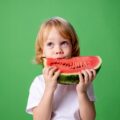High Fat Foods for Toddlers
High-fat foods for toddlers are often misunderstood. Many parents think they’re harmful, but the truth is, they’re essential for a toddler’s growth and development. In this article, I’ll debunk the myths and shed light on the importance of these foods.
Contrary to popular belief, not all fats are bad. Healthy fats are a vital part of a toddler’s diet. They provide energy, support brain development, and help with nutrient absorption. It’s about choosing the right kinds of fats and incorporating them wisely into your child’s meals.
I’ll guide you through the best high-fat foods for your little ones, how to serve them, and the recommended portions. Remember, it’s not about stuffing your child with fatty foods, but rather about balancing their diet with the right amount of healthy fats.
Benefits of Incorporating High-Fat Foods in Toddlers’ Diet
The importance of high-fat foods for toddlers is often underestimated. Parents might hear “fat” and immediately think it’s bad. Yet, healthy fats are crucial for a toddler’s growth and development. Here’s why:
First off, healthy fats provide a high energy source. Toddlers are bundles of energy. They’re always exploring, learning, and growing. To support this level of activity, they need a diet that sustains their energy levels. High-fat foods are excellent for this purpose. They deliver more than double the energy of proteins or carbohydrates.
Second, fat is essential for brain development. The human brain is nearly 60% fat. For toddlers, whose brains are developing rapidly, dietary fats are a must. They aid in the development of the nervous system and cognitive abilities.
Finally, fats help with nutrient absorption. Many essential vitamins – like A, D, E, and K – are fat-soluble. This means they need fat to be absorbed by the body. Including high-fat foods in a toddler’s diet ensures they’re getting the full benefits of these vitamins.
So, how can you incorporate these high-fat foods into your toddler’s meals? It’s all about balance. Avocados, full-fat dairy products, and fatty fish are some excellent choices. Serving sizes should be appropriate for a toddler’s age and size.
Remember, it’s about the quality of fats, not just the quantity. Avoid processed foods high in unhealthy fats. Instead, focus on whole foods rich in healthy fats. These will contribute to a balanced, nutritious diet that supports your toddler’s growth and development.
Incorporating high-fat foods into your toddler’s diet is not about encouraging unhealthy eating habits. Rather, it’s recognizing the role of healthy fats in their overall wellbeing. With the right choices, you’ll be fueling their bodies and brains for optimal growth and development.

Essential Fatty Acids for Toddlers
Fats come in many forms but it’s the essential fatty acids that play a crucial role in a toddler’s development. These fats, often found in high fat foods for toddlers, are not only an excellent source of energy but also vital for brain development and nutrient absorption.
There are two kinds of essential fatty acids: Omega-3 and Omega-6. Both are indispensable to a child’s health. Omega-3 fatty acids are known to boost brain function and support eye health. You’ll find them in foods like:
- Salmon
- Tuna
- Chia seeds
- Flaxseeds
On the other hand, Omega-6 fatty acids help with skin and hair growth along with regulating metabolism. They’re present in foods such as:
- Walnuts
- Sunflower seeds
- Peanut butter
While these foods are high in fats, remember that moderation is key. Toddlers should have a balanced diet that includes other food groups, not just fats.
Incorporating these high fat foods into your toddler’s diet isn’t about promoting unhealthy eating habits. Instead, it’s about recognizing the role of healthy fats in their overall wellbeing. With the right choices, you’re fueling their bodies and brains for optimal growth and development.
Remember, the goal isn’t to overload your child with fatty foods but to provide them with the right amount of healthy fats. It’s all about balance and making smart choices for your child’s nutrition.
Recommended High Fat Foods for Toddlers
When it comes to high fat foods for toddlers, some options stand out as exceptionally beneficial. Foods rich in healthy fats are the cornerstone for a toddler’s growth and development. Here are some of the top choices for integrating essential fatty acids into your child’s diet:
- Avocados: These green gems are packed with monounsaturated fats. They’re easy to incorporate into meals and can be mashed up and spread on whole grain toast.
- Full-fat dairy: Yogurt, cheese, and milk are all excellent sources of fat and protein. They also serve as great sources of calcium for developing bones.
- Chia seeds: A sprinkle of these in your child’s cereal or smoothie offers a significant Omega-3 boost.
- Nuts and nut butters: Almonds, walnuts, and their respective butters provide both Omega-3 and Omega-6 fatty acids. Remember to opt for the unsalted, unsweetened varieties.
Incorporating these foods into your toddler’s diet can contribute to their overall health and development. But it’s essential to remember that moderation is key. Too much of anything isn’t good – even healthy fats.
While these high-fat foods are great for toddlers, they should be part of a balanced diet that includes fruits, vegetables, lean proteins, and whole grains. This will ensure that your child gets a wide range of nutrients necessary for their growth and development.
Eating habits established during toddlerhood can set the stage for lifelong dietary patterns. So, it’s crucial to start incorporating these healthy high-fat foods into their diet early on. This will help to nurture a healthy relationship with food and solidify good eating habits for the years to come.
Feeding our toddlers high-fat foods isn’t just about filling their tiny tummies. It’s about fueling their growth and development with the right kind of fats. Monounsaturated and polyunsaturated fats from foods like avocados, nuts, and chia seeds are the way to go. Remember, variety’s the spice of life and it’s no different when it comes to their diet. Mixing up their meals not only keeps things interesting, but ensures they’re getting a broad spectrum of nutrients.But let’s not forget, it’s all about balance. High-fat foods are just one piece of the dietary puzzle. We’ve got to include all food groups in their meals. And while they might have small stomachs, we need to keep an eye on those portion sizes.
The bottom line? It’s all about establishing healthy eating habits from the get-go. Do it right, and we’re setting them up for a lifetime of healthy eating. And that’s a win in any parent’s book.

Jessica has a flair for writing engaging blogs and articles. She enjoys reading and learning new things which enables her to write different topics and fields with ease. She also strives to break down complex concepts and make them easy for anybody to comprehend.





